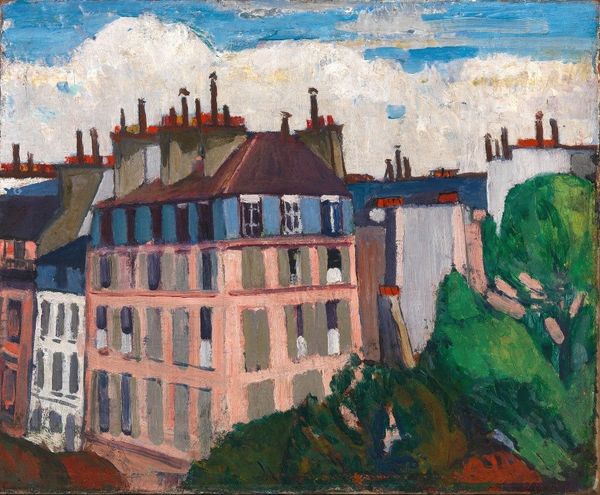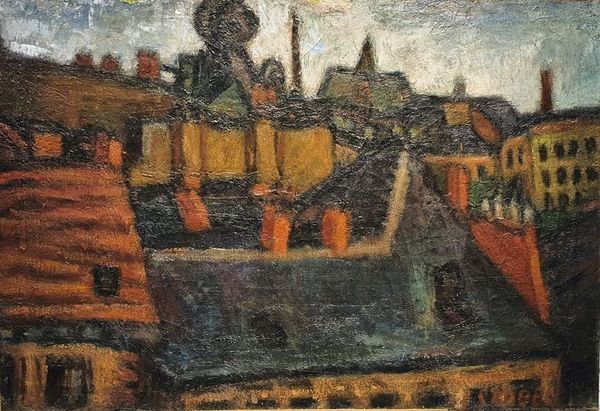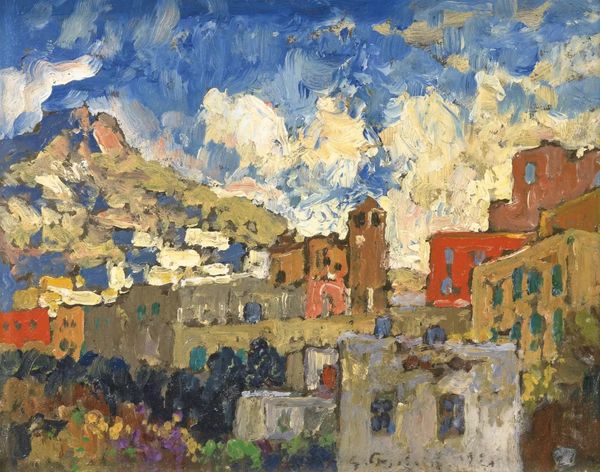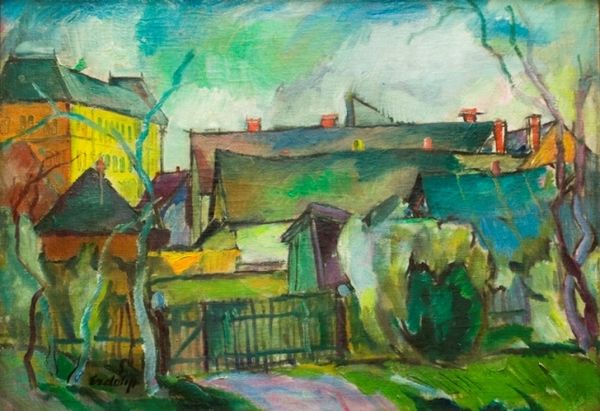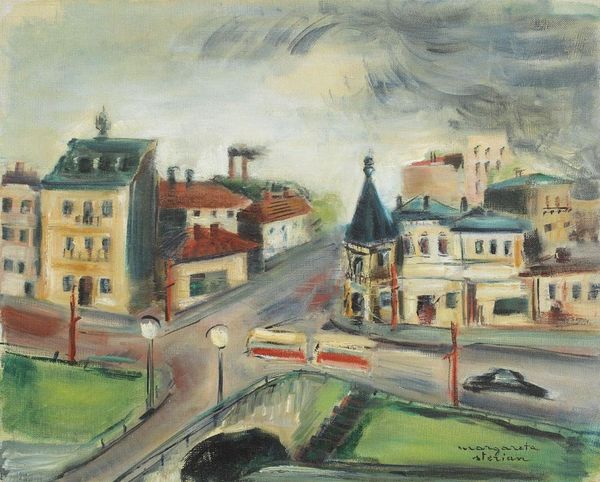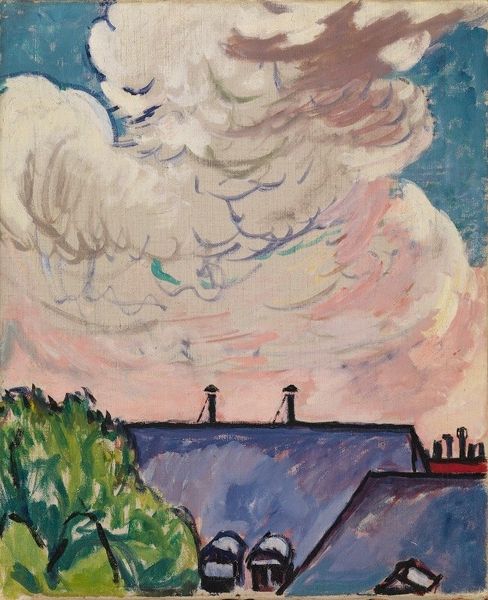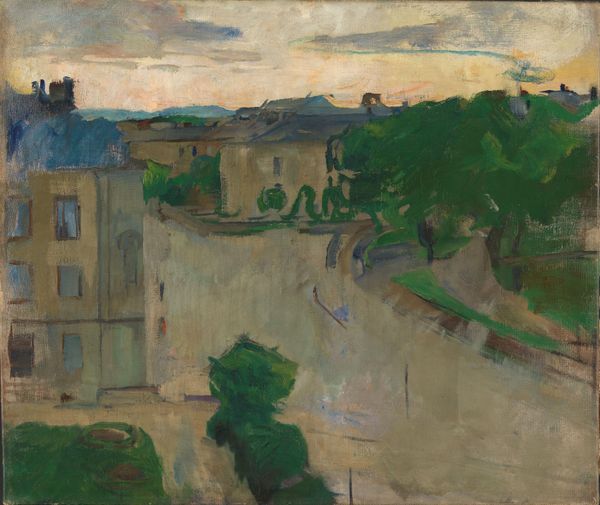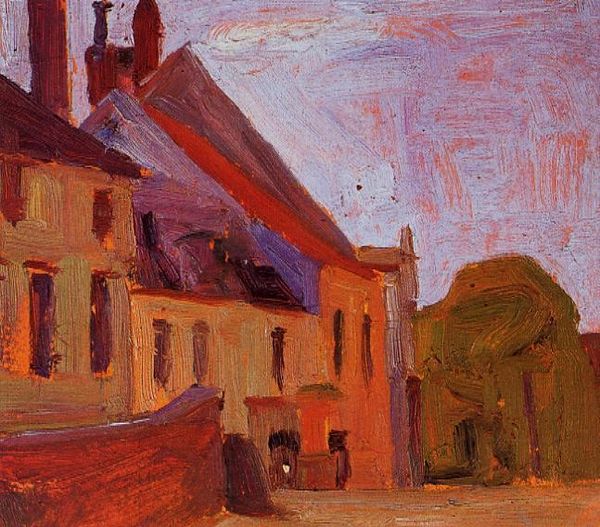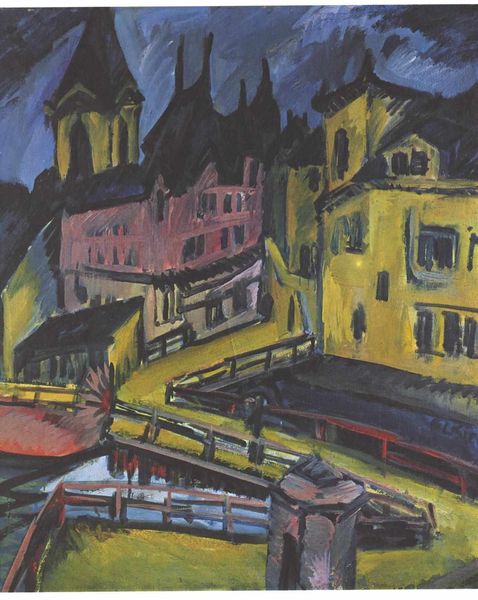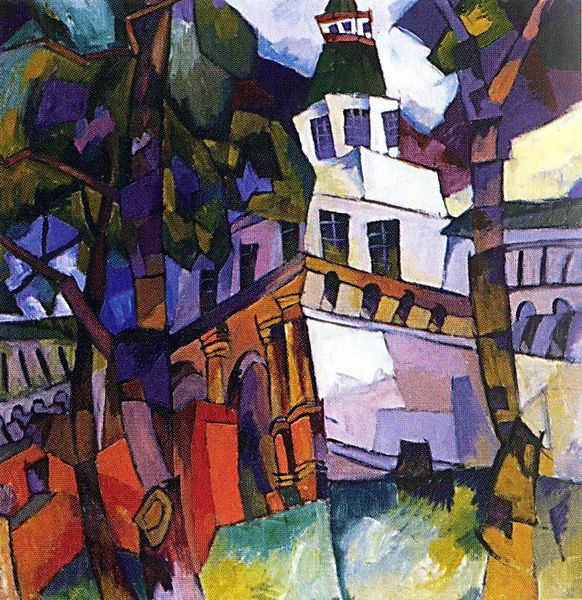
Copyright: Public Domain: Artvee
Editor: This is Henry Lyman Saffen’s “Rooftops and Clouds, Paris,” made between 1910 and 1912. It’s an oil painting, and you can really see the texture of the paint. I’m struck by how heavy and imposing the clouds feel compared to the houses below. What jumps out at you? Curator: Well, focusing on materiality, I’m interested in Saffen’s use of impasto. Look at the sheer physicality of the paint application, especially in the sky. What does that thickness, that deliberate layering of material, *do*? Editor: I guess it makes it feel more real, more present? The clouds almost seem to be pressing down. Curator: Exactly! And consider the social context. Early 20th-century Paris was rapidly industrializing. How might the act of manually building up paint on the canvas be a commentary on or a reaction against mass production? Are the rooftops also mass produced, creating housing for urban labour? Editor: That’s a cool idea. So, he's using a very physical, handmade process to depict this industrialized landscape. Is he criticizing it? Curator: Not necessarily criticizing, but perhaps revealing the tensions. He’s highlighting the labor involved in creating the artwork itself, almost as a counterpoint to the perceived ease of industrial production. What does the facture of the rooftops suggest? Is the artist suggesting that these are built structures, manufactured using specific techniques? Editor: It is like he’s bringing attention to the work and the material. He wants you to notice how it’s constructed. I hadn’t really thought about the process behind it like that. Thanks! Curator: It is crucial to unpack art's making in order to evaluate its cultural meaning, from creation to viewing.
Comments
No comments
Be the first to comment and join the conversation on the ultimate creative platform.
